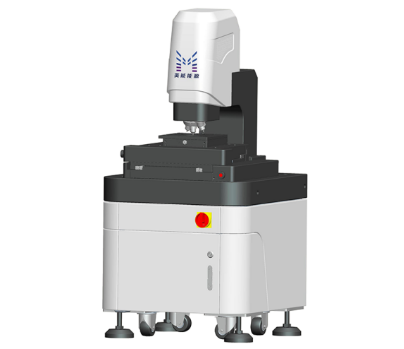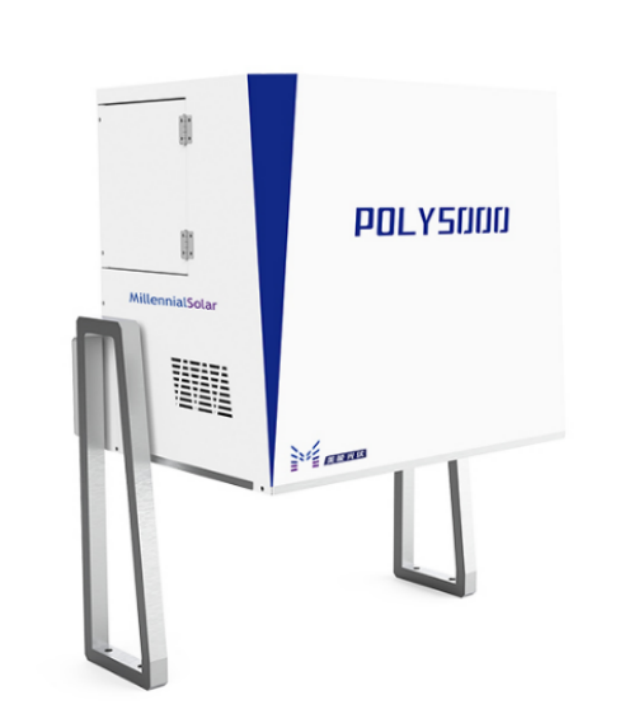
量子效率测试仪
PL/EL一体机
Sinton硅片少子寿命测试仪
Sinton硅块少子寿命测试仪
绒面反射率测试仪
3D共聚焦显微镜
清洗制绒工作站
在线四探针方阻测试仪
全自动扫描四探针方阻测试仪
在线薄膜厚度测试仪
晶化率测试仪
Horiba高速高分辨显微共焦拉曼光谱仪
傅里叶红外光谱仪
霍尔效应测试仪
分光光度计
全光谱椭偏仪
Horiba椭圆偏振光谱仪
TLM接触电阻率测试仪
超景深显微镜
网版智能影像测量仪
全自动影像测量仪
卧式拉力机
电池片稳态光衰老化试验箱
电池片紫外老化试验箱
电池片拉脱力综合测试仪
外观检验台
湿漏电测试系统
组件实验室EL测试仪
紫外老化试验箱
稳态光衰老化试验箱
电流连续性监测系统
PID测试系统
旁路二极管测试系统
LeTID测试系统
反向电流过载系统
脉冲电压测试系统
绝缘耐压测试仪
接地连续性测试仪
绝缘耐压接地测试仪
湿热环境试验箱
湿冻环境试验箱
热循环试验箱
动态机械载荷测试机
静态机械载荷测试机
冰雹冲击试验机
引出端强度试验机
霰弹冲击试验机
抗划伤(切割)测试机
剥离试验机
万能材料试验机(单臂)
万能材料试验机(双臂)
光伏玻璃透过率测试仪
醋酸测试试验箱
交联度测试系统
二极管接线盒综合测试仪
落球冲击试验机
半自动四探针
全自动探针式台阶仪
复合式LED模拟器
多通道太阳能MPPT系统
LED模拟器光浴
Horiba高灵敏一体式稳瞬态荧光光谱仪
钙钛矿P1激光划线测试仪
钙钛矿在线膜厚测试仪
钙钛矿工艺检测工作站
手持式IV测试仪
便携式EL测试仪
手持热成像测试仪
户外组件IV测试仪
户外组件多通道测试系统
光伏逆变器电能质量测试仪
无人机EL检测仪
TOPCon电池降本提效思路解析
日期:2024-02-01
由于TOPCon电池效率超预期追赶HJT电池,2022年~2023年市场选择了TOPCon,且预计未来TOPCon的生命周期会依然维持5~6年。虽然TOPCon工艺技术已经趋于成熟,但是仍有降本提效的空间。美能光伏拥有“高效TOPCon电池研发解决方案”,其中对于栅线的高宽表征,硅片绒面金字塔形貌,薄层的电阻、方阻、接触电阻、线电阻等表征,以及多晶硅层(POLY层)的厚度测量,都有对应的精密检测设备,高效准确的评估电池性能,帮助客户完成电池效率提升。今天带大家了解TOPCon电池降本提效的方式有哪些。
TOPCon降本思路
TOPCon降本方向为硅片、银浆、设备成本、良品率等。

硅片方面:
N型硅片是通过掺杂磷元素制成,由于磷原子与硅相溶性较差,因此对硅料、辅材的纯度及生产过程控制要求更高,成本更高,较P型硅片存在一定溢价。但随着N型硅片规模化生产及技术进步,薄片化和大尺寸进程加速,将推动硅片成本下降。
银浆方面:
TOPCon电池(正面+背面)采用高温银浆,耗量在150mg/片左右,未来随着通过多主栅技术和减少细栅宽度来降低银浆的消耗,有望降至110-130mg/片。且激光印刷和电镀铜等更多的新工艺技术的提升,使银浆成本有望下降;
设备成本方面:
随着国内光伏行业的迅速发展行情,生产设备国产化也越来越多,这将降低单GW设备投资额度。在工艺上,TOPCon电池工艺相较PERC电池导入了3项新的工艺,产线只需要增加3台新设备,未来随着设备效率提升及设备价格下行,折旧成本有望进一步下降。
品质方面:
当前限制TOPCon量产核心因素在于良率普遍低于95%,不断优化各工艺段,能够提高产品的良率。
TOPCon增效思路
降低电学损失
TOPCon提效的核心在于降低电学损失,包括SE、双面POLY、全域钝化以及叠层电池等方法。
各厂商即将引入SE平台,预计此举将提效0.2%-0.4%;24年引入双面POLY,量产效率有望提高至26%以上;25年引入全域钝化技术,有望提效至27%,之后提效主线在叠层电池技术发展。目前各家厂商N型电池效率提升速度较快,主流产商量产效率在25%-25.5%之间,未来有望通过引入SE平台、进行双面钝化以及叠层电池技术突破等方式,实现效率进一步提升。
选择性发射极
TOPCon中SE技术与PERC中的SE原理类似,在电极内/外进行高/低浓度掺杂,能够提高硅片少子寿命,提高电池效率。SE(选择性发射极技术)是指在金属正极与硅片接触部位及其附近进行高浓度掺杂形成P++层,而在电极以外的区域进行低浓度掺杂形成P+层。

TOPCon+SE示意图
该技术既可确保硅片和电极之间有较低的接触电阻,又可降低硅片表面复合率,以提高硅片的少子寿命,从而提升电池的转换效率。硼掺杂工艺更复杂激光器功率更高;过程中可能存在两类钝化层烧穿,需精准把控激光功率。
TOPCon中的激光掺杂分为一次硼扩、二次硼扩两种路径,目前量产主流选择一次激光直掺。一次硼扩类似于PERC生产过程标配的硼扩工艺,工序较为简单,该路径下仅进行一次激光掺杂、硼扩与清洗,工序较简单且设备投资额较低,但技术难度较高。
双面POLY
目前钝化结构主要应用在电池背表面,前表面仍采用传统电池结构,双面钝化/全域钝化能够进一步提高效率。为进一步降低电池表面载流子复合速率、减小接触电阻,可以在正面电极下进行P-poly,采用双面/全域钝化结构进一步提高正面效率。
双面钝化接触电池的硅片基体正面设有多晶硅层,基体的背面为P掺杂的poly钝化层。不同于双面钝化仅在电极下方进行P-poly,全域钝化技术对电池正面整体进行P-poly,预计能够进一步提高效率。

双面钝化电池结构

制备双面钝化电池流程图
美能3D显微镜

美能3D共聚焦显微镜是以光学技术为原理、结合精密Z向扫描模块、3D建模算法等对器件表面进行非接触式扫描并建立表面3D图像,通过系统软件对栅线的高度与宽度、绒面上的金字塔数量进行定量检测,以反馈其中的清洗制绒、丝网印刷工艺质量。
精确可靠的3D测量,实现实时共聚焦显微图像
超高共聚焦镜头,Z轴显示分辨率可达1nm
198-39966倍最大综合倍率,精确测量亚微米级形貌
全自动栅线绒面测量,快速生成数据
美能扫描四探针电阻测试仪

美能四探针电阻测试仪可以对最大230mm的样品进行快速、自动的扫描,获得样品不同位置的方阻/电阻率分布信息,可广泛应用于光伏、半导体、合金、陶瓷等诸多领域。
超高测量范围,测量1mΩ~100MΩ
高精密测量,动态重复性可达0.2%
全自动多点扫描,多种预设方案亦可自定义调节
快速材料表征,可自动执行校正因子计算
美能Poly在线膜厚测试仪

美能Poly5000在线膜厚测试仪是专为光伏工艺监控设计,可以对样品进行快速、自动的5点同步扫描,获得样品不同位置的膜厚分布信息,可根据客户样品大小定制测量尺寸。
有效光谱范围320nm~2400nm
快速、自动的5点同步扫描
重复性精度<0.5nm
超广测量范围20nm~2000nm
在线监控检测实现零碎片率
实现全程产线自动化检测、大大节约检测时间
在N型逐渐超越甚至取代P型的大背景下,TOPCon电池在渗透、效率、产业成熟度、配套协同、P型改造等方面具备优势,且目前行业规模效应显著。美能光伏所提供的“高效TOPCon电池研发解决方案”,致力于帮助用户在研发过程中解决许多技术难关,与客户一起为光伏行业发展贡献力量。






































































